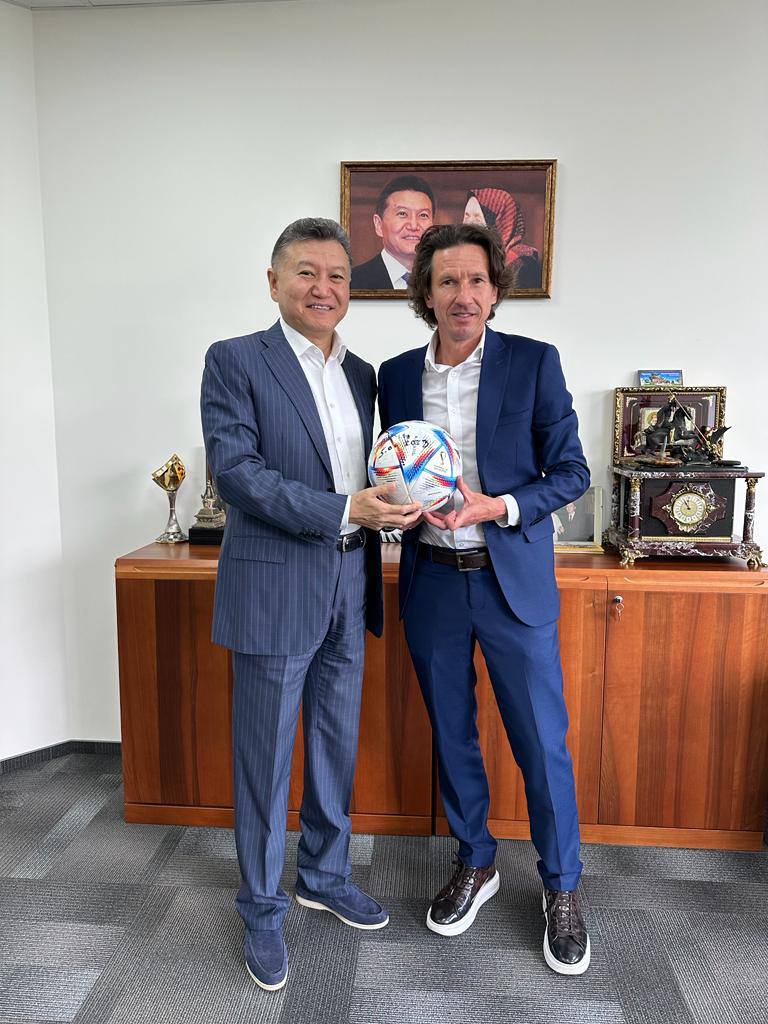In 2009, at an investment forum in Sochi, Ilyumzhinov presented the construction plan of the Manych Ship Canal, which was supposed to become a major logistics element of the "Eurasia" international canal.
The project of the Kalmyk leader was supported by the President of Kazakhstan Nursultan Nazarbayev and Chinese partners interested in the possibility of transit of goods manufactured in China to the European Union. Astana and Beijing had declared their readiness to support the project with the serious money investments (in 2009, the value of the "Eurasia" was estimated at $ 4.5 billion and construction was expected to take 6 or 7 years).
Several reasons hindered the realization of the Eurasian transport corridor. Among them were 2008 economic crisis and the lobbying efforts of some federal officials promoting, as an alternative, the modernization of the navigable Volga-Don canal (VDSK), also called "Volga-Don-2".
In contrast to the "Eurasia", "Volga-Don-2" was not an international venture, being a purely internal logistics project, albeit with a very good budget. According to experts, the competitive potential of the two transit corridors was seriously overestimated ("there would be enough work for both routes"), but a clash of lobbying interests led to the freezing of both the "Eurasia" and "Volga-Don-2" projects.
And, as it soon turned out, that was a mistake: in 2013, Chinese President Xi Jinping enunciated the initiative of the New Silk Road under the motto "One Belt One Way." This project has set a goal to create a powerful logistics network, which allows transporting the products of Chinese "The World Factory" through the Central Asian Republics, the Caspian Sea and the South Caucasus to Iran, the Black Sea region and the EU.
The Chinese architects of the project focused on the routes outside the Russian territory. The reason was simple: the lack of the necessary infrastructure of Russian regions to participate in a global initiative of Beijing.
Now it is obvious that had the resistance of lobbyists of "Volga-Don-2" project been overcome and the construction of the "Eurasia" - with the support of the Kazakh and Chinese investors - begun, Moscow would have completely different status in the transit network connecting China to Europe. And along with it, the new economic opportunities would have emerged for the Republic of Kalmykia, Stavropol region, Dagestan and Rostov region with the help of the Eurasian corridor.
Astrakhan and Volgograd regions, whose leaders initially supported the lobbyists of "Volga-Don-2", would have prospered as well. But, as a result, they got nothing and are forced to look for a partner among the Caspian states on their own. Of course, without any hope for the big Chinese money that could have poured into the regions together with the "Eurasia".
The November proposal of Ilyumzhinov to reconsider the project of seven years ago could be a sign of change in the position of the Russian leadership, which, due to obvious economic reasons, is very interested in employment of various components of the New Silk Road on the territory of the Russian Federation. It is especially obvious in view of increasing competition among the former Soviet republics.
One recent example is worth mentioning: a few days ago in Baku, the representatives of Azerbaijan, Georgia, Turkey, Turkmenistan and Afghanistan were prepared for signing an agreement on construction of the "Lapis Lazuli corridor." This is a new railway and water transit route connecting the Central and South Asia, the Caspian, the Black Sea and the Mediterranean basin. Undoubtedly, this route will be of interest to the Chinese authorities, who would be able to use it to implement the "One Belt One Way" strategy.
The more transit corridors from the western borders of China to the borders of the European Union, bypassing the Russian territory, emerges, the less are the chances of Russian regions to benefit from their favorable geographical position. Not to mention the political dividends, which the Kremlin would have received as a member of another economic project important for Beijing and European countries.
The practical implementation of the "Eurasia" transit corridor project would undoubtedly have a positive impact on the economic situation in the Republic of Kalmykia, Dagestan, Astrakhan, Volgograd and Rostov and the Stavropol regions. We are talking about investments of billions of dollars, which means new jobs, employment of idle industrial capacities, modernization of ports facilities, new opportunities for regional cooperation, and so on…
There are signs showing that the "Eurasia" transit project has a second chance. Unfortunately, there is no guarantee that it will not be lost again. The international competition for the most profitable places for transit corridors from China to Europe is increasing. The slow progress on part of Moscow in this competition will result in the loss of economic opportunities not only for the regions of southern Russia, but also for the country as a whole.
 On November 11, the former head of Kalmykia FIDE President Kirsan Ilyumzhinov presented the project of transport corridor called "Eurasia" at the "Eurasian economic integration" conference in Moscow.
On November 11, the former head of Kalmykia FIDE President Kirsan Ilyumzhinov presented the project of transport corridor called "Eurasia" at the "Eurasian economic integration" conference in Moscow.






















